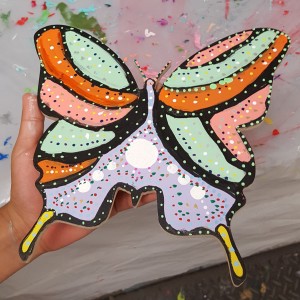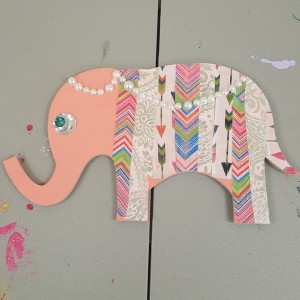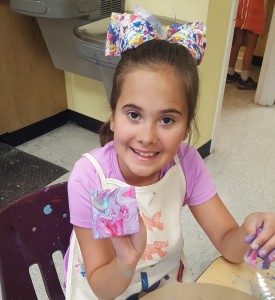For me, one of the best parts of working at Cut & Paste is watching kids create. Most young kids feel perfectly capable of creating a masterpiece every time they pick up a paint brush.

At some point, maybe around 12 or 13 years old, many of them begin to put pressure on themselves to perform when they paint, and they lose their confidence. They stop painting, and then as adults they frequently say thing like “I’m just not creative.”
Pablo Picasso said it most succinctly “Every child is an artist. The problem is how to remain an artist once he grows up.”
So how do we help kids remain artists? I think I’ve learned a few things about this in the last 3 years, working with hundreds of kids in our studio. Here are my tips for fostering creativity in kids.
- Stop helping. I know, its hard! But I can’t tell you how many times I’ve seen a parent or grandparent take a paint brush out of a child’s hand so that they can “fix” the project. Yes, sometimes, a child will ask for help. But if they don’t ask, DON’T FIX. Allowing a child to paint their entire project by themselves lets them know that you think what they are creating is just fine. It doesn’t matter if Elsa’s face is a blurry mess, this is a snapshot of your child’s creativity at this time in their life. Treasure it! Ask for a marker and write their name and the date on the back
 Give advice, rather than giving a hand. Sometimes kids will ask for help. If they do, try giving them advice on how to continue, rather than doing it for them. This is a hard one for me! If you need help with technique, ask one of our staff for help, and we’ll do a little lesson for your kids.
Give advice, rather than giving a hand. Sometimes kids will ask for help. If they do, try giving them advice on how to continue, rather than doing it for them. This is a hard one for me! If you need help with technique, ask one of our staff for help, and we’ll do a little lesson for your kids.- Praise less. I know this sounds counter-intuitive, but remember, kids are smart. They know that not every project they paint is “the most beautiful ever.” Instead, get your kids talking about their project. “That’s a really pretty shade of blue. Why did you choose that one?” “I see you used polka dots there. Were those fun to paint?” “What was your favorite part of painting this project?” You are showing that you are interested in what they are doing and why they made the choices they did.
- Paint your own project while they are painting theirs. I know this sounds like I’m trying to get you to spend more money, but really, painting TOGETHER with your kids is a wonderful experience. Ask them for advice on colors, on what you should paint next. Let them know you value their opinion. It also takes your focus off their project, which also takes the pressure off of them.
- If you do paint your own project, don’t criticize your own painting. Let your kids know that the object of painting a project is to have fun, not to create a masterpiece. It’s the PROCESS, not the PRODUCT.
 Keep art supplies available at home all the time. You don’t have to have expensive supplies, messy acrylic paint, or wooden projects like we have. Instead keep a stack of paper and some pretty sets of watercolor paints, some chalk pastels and even a nice box of markers. Throw in some glue sticks, construction paper and scissors and you’ve got a creativity set that is easy to pull and out and easy to clean up. Michaels has a gorgeous set of metallic, pastel watercolors for just $5 that are so much fun to work with.
Keep art supplies available at home all the time. You don’t have to have expensive supplies, messy acrylic paint, or wooden projects like we have. Instead keep a stack of paper and some pretty sets of watercolor paints, some chalk pastels and even a nice box of markers. Throw in some glue sticks, construction paper and scissors and you’ve got a creativity set that is easy to pull and out and easy to clean up. Michaels has a gorgeous set of metallic, pastel watercolors for just $5 that are so much fun to work with.









